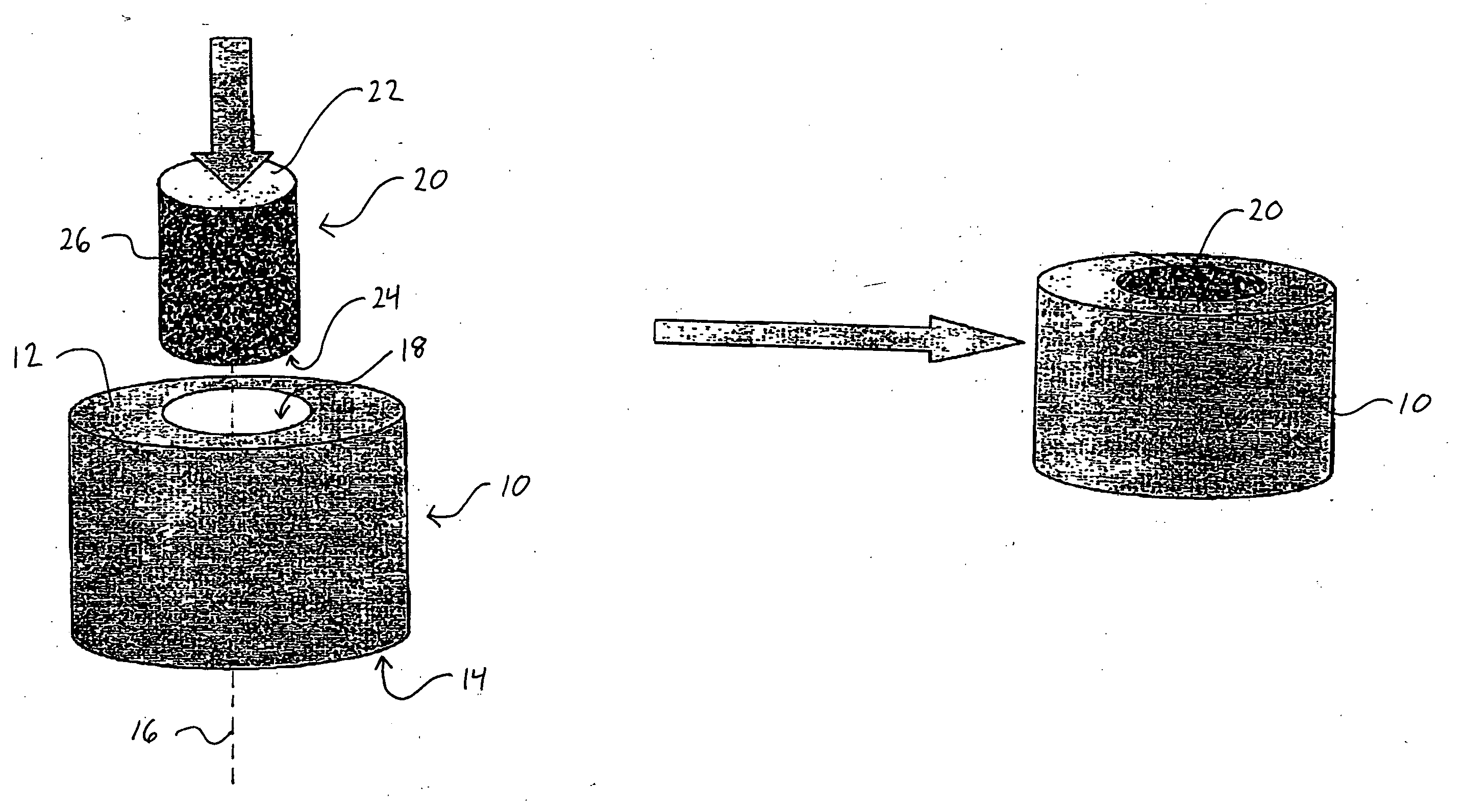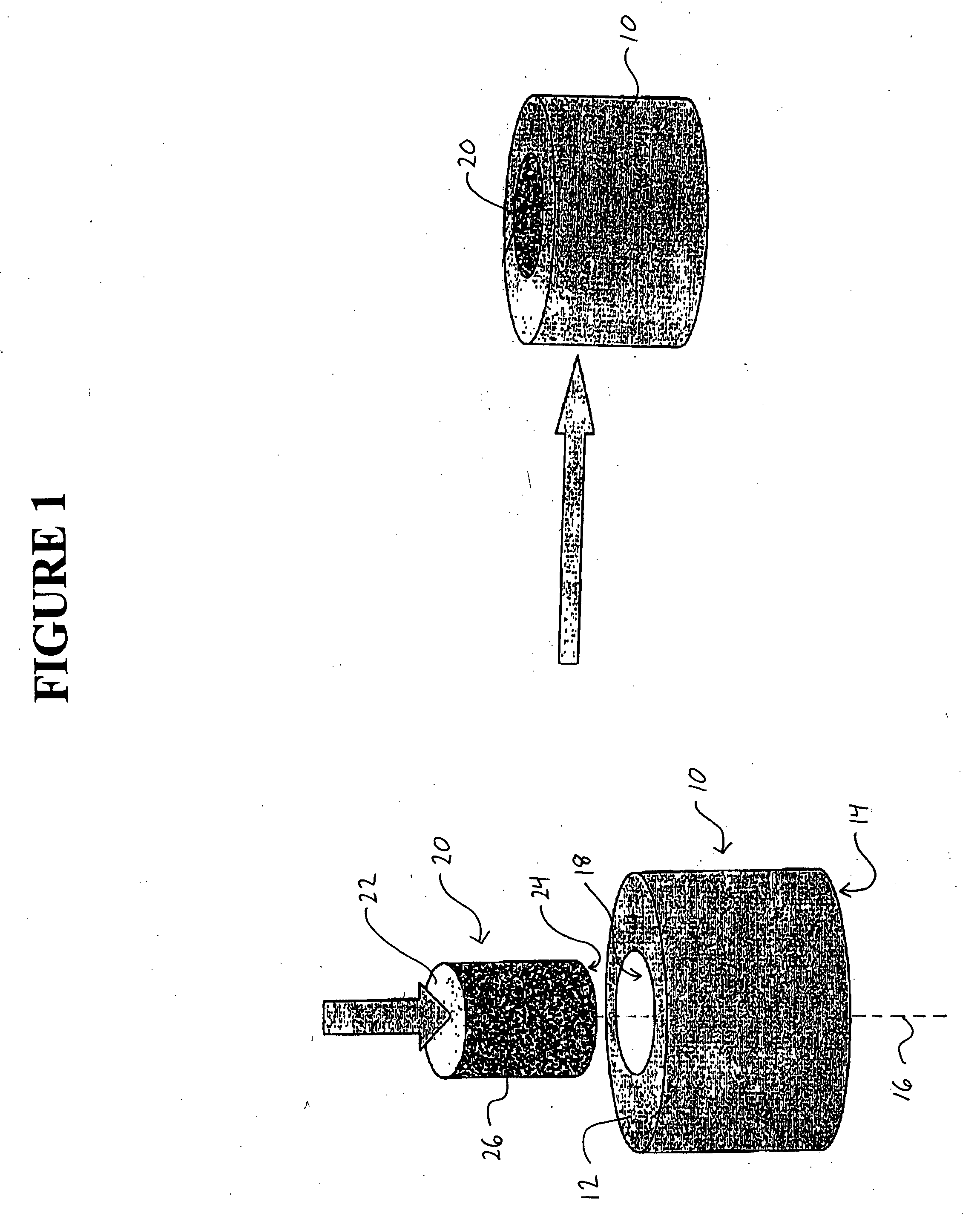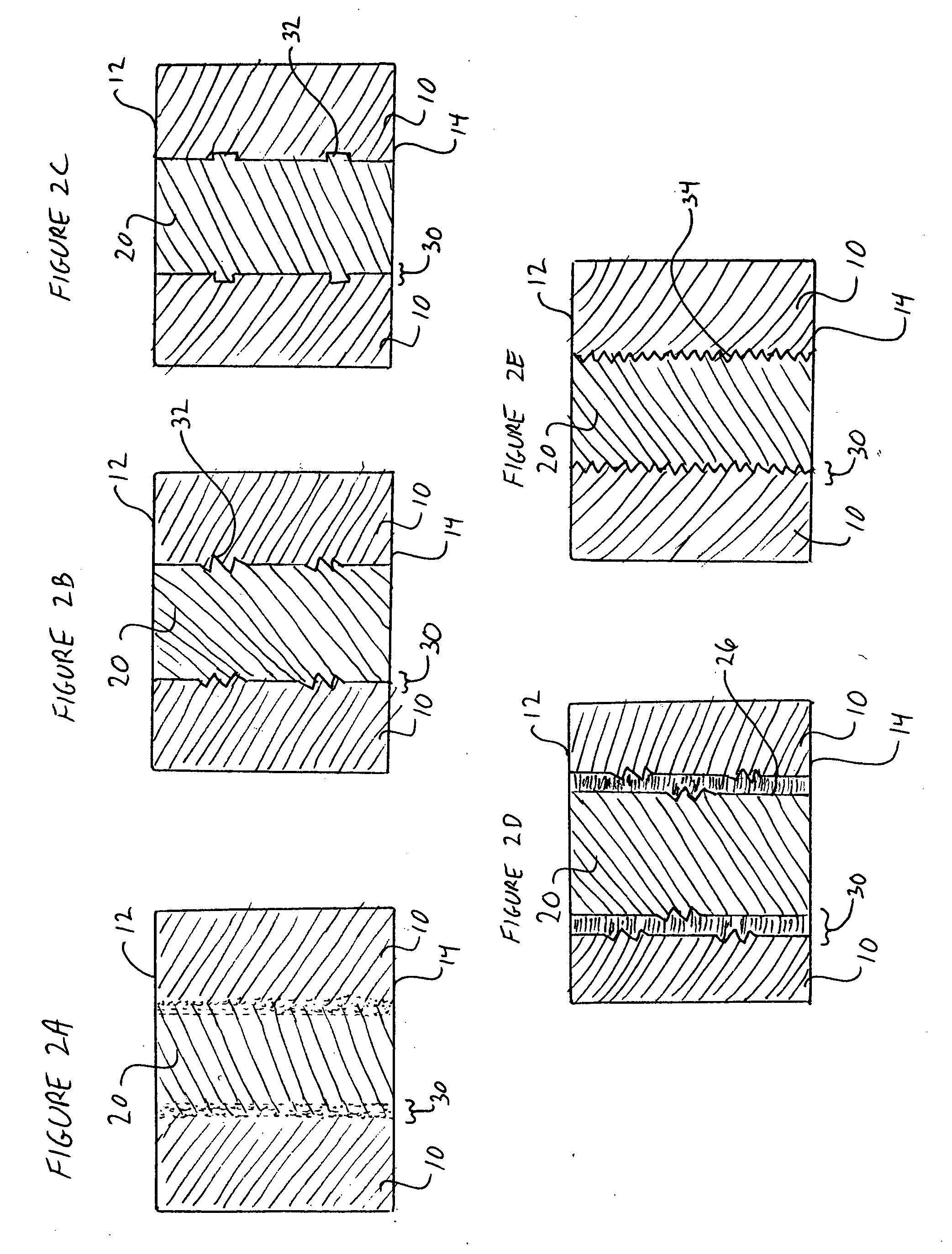Osteoconductive integrated spinal cage and method of making same
- Summary
- Abstract
- Description
- Claims
- Application Information
AI Technical Summary
Benefits of technology
Problems solved by technology
Method used
Image
Examples
example 1
Spinal Cage Made by Heat Staking of HA Osteoconductive Component into PEKK Structural Component
[0061] One of several manufacturing methods used to join the osteoconductive portion with the polymer structural component includes heat staking. In this example, the osteoconductive material is preferably composed of a substance(s) that can be heated to above the melting temperature of the polymer without significant degradation. Osteoconductive materials that may be used in this method include ceramics such as porous hydroxyapatite (HA) and calcium phosphate. The HA component must be slightly larger than the polymer component so that when inserted a slight interference fit is developed such that mechanical forces will prevent the two from separating. To use heat staking as the joining method, one must preheat the osteoconductive portion significantly above the melting temperature of the structural polymer component. For example, using PEKK polymer, one must preheat the HA osteoconductiv...
example 2
Over Molding PEEK Polymer Over Tri-Calcium Phosphate
[0062] In this example, the PEEK polymer is the structural component of the spinal cage, and tri-calcium phosphate is the osteoconductive portion of the spinal cage. A mold designed to create the proper shape for intervertebral implantation, restoration of disc height, and over molding of the tri-calcium phosphate portion. In this case, the tri-calcium phosphate actually makes up the interior surfaces of the polymer mold. The tri-calcium phosphate is designed such that there is a mechanical locking caused between the polymer and tri-calcium phosphate (TCP). For example, the TCP component can be shaped such that it has small apertures or appendages that the polymer is formed into or around when it is melted over the surface. The preferred method for melting the polymer in a mold around the TCP is injection molding, however, compression molding may also work. This over molding process includes inserting the TCP into the mold and hol...
example 3
Snap Fit of Resorbable Polymer onto Titanium Spinal Cage
[0063] In this example, a resorbable polymer such as polyglycolic acid (PGA) is used to form the osteoconductive portion of the spinal cage, and titanium is used for the structural component. In this method, clinically superior results may be achieved if the resorbable polymer is porous and filled with a small amount of calcium sulfate. The resorbable polymer shape is designed such that it includes a flexible snap for incorporating with the titanium structural component. Substantial design freedom exists in this instance. In general, snap fits may be achieved by providing an extension on one of the two components which is received within a complementary recess on the other of the two components. The titanium can make up the interior, exterior, or even side portion of the cage in order to cause bone growth through out the inter-vertebral space.
PUM
| Property | Measurement | Unit |
|---|---|---|
| Compressive strength | aaaaa | aaaaa |
| Size | aaaaa | aaaaa |
| Strength | aaaaa | aaaaa |
Abstract
Description
Claims
Application Information
 Login to View More
Login to View More - R&D
- Intellectual Property
- Life Sciences
- Materials
- Tech Scout
- Unparalleled Data Quality
- Higher Quality Content
- 60% Fewer Hallucinations
Browse by: Latest US Patents, China's latest patents, Technical Efficacy Thesaurus, Application Domain, Technology Topic, Popular Technical Reports.
© 2025 PatSnap. All rights reserved.Legal|Privacy policy|Modern Slavery Act Transparency Statement|Sitemap|About US| Contact US: help@patsnap.com



